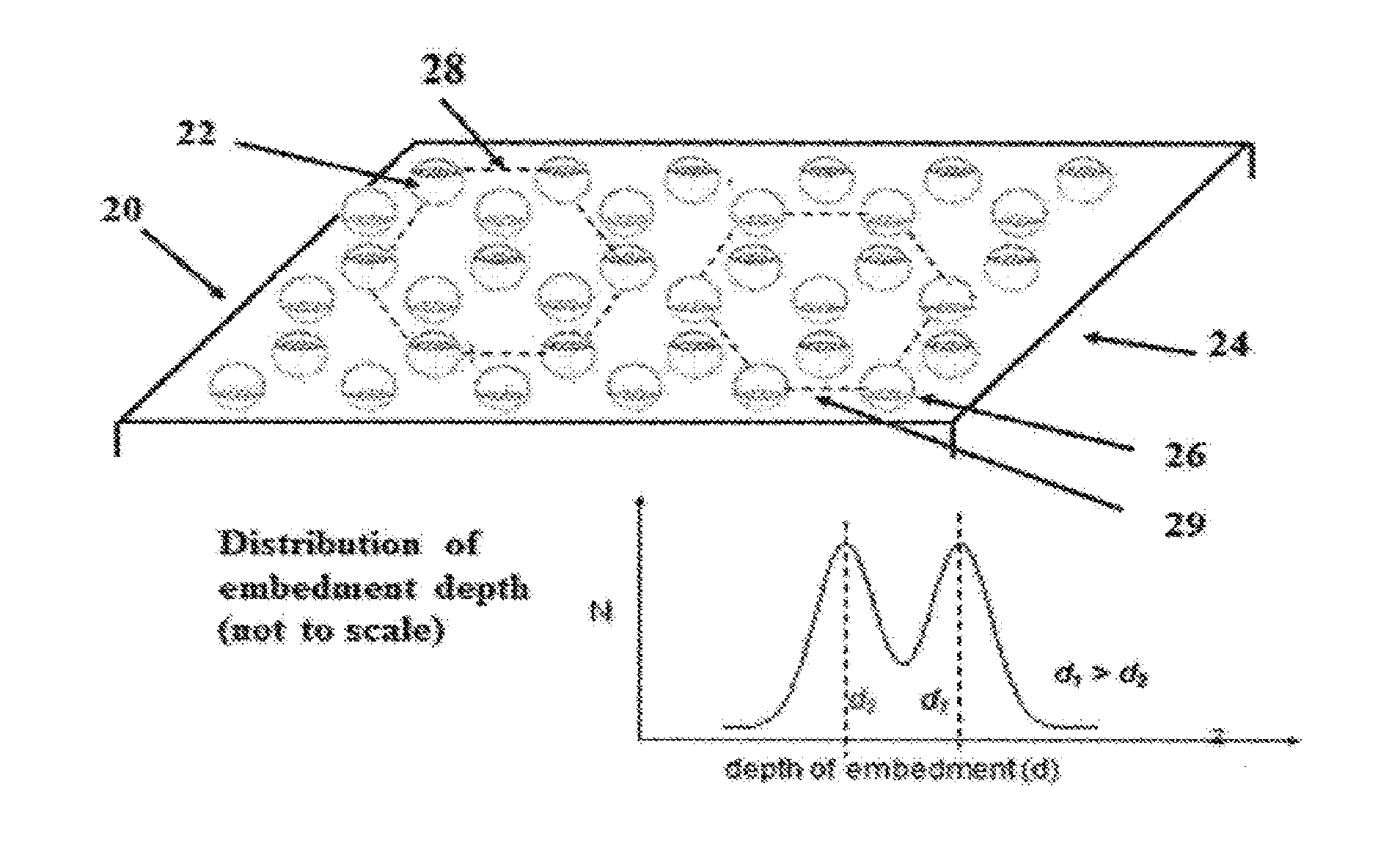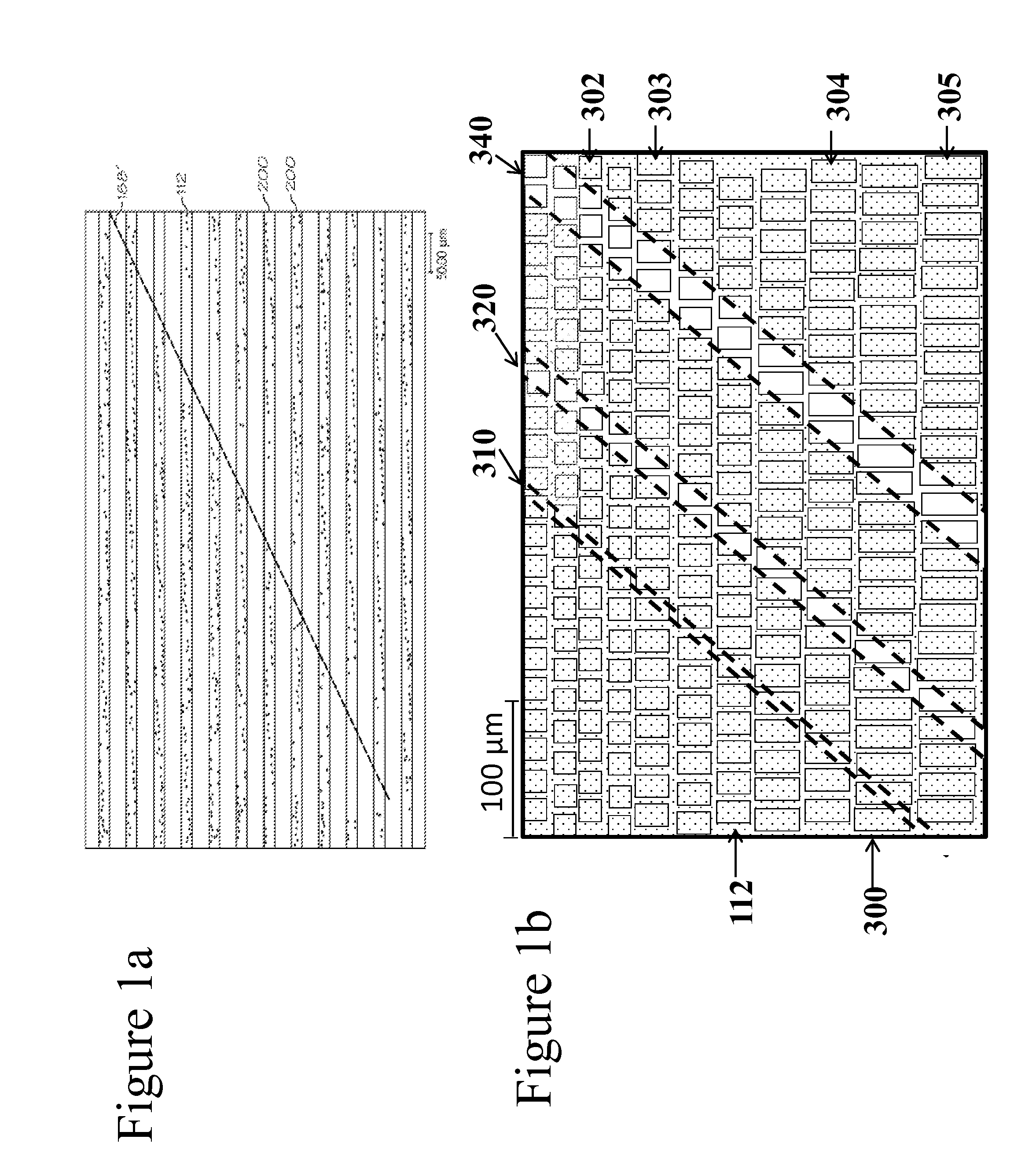FIXED ARRAY ACFs WITH MULTI-TIER PARTIALLY EMBEDDED PARTICLE MORPHOLOGY AND THEIR MANUFACTURING PROCESSES
a technology of partially embedded particles and fixed arrays, which is applied in the direction of film/foil adhesives, printed circuit manufacturing, transportation and packaging, etc., can solve the problems of high undesirable for high resolution connections, breakage or shortening of electric circuit connections, and microcavities in this portion of the carrier web that are not well adapted to hold conductive particles, etc., to achieve better contact resistance, higher peeling force, and particle capture rate
- Summary
- Abstract
- Description
- Claims
- Application Information
AI Technical Summary
Benefits of technology
Problems solved by technology
Method used
Image
Examples
Embodiment Construction
[0034]U.S. Published Application 2010 / 0101700 and U.S. application Ser. No. 13 / 111,300 filed May 19, 2011 to Liang et al. are also incorporated herein, in their entirety, by reference.
[0035]A carrier sheet or belt containing microcavities of about 6 μm (diameter) by about 4 μm (depth) by about 3 μm (partition) that is useful in transferring the conductive particles to the surface of the adhesive layer can be prepared by laser ablation on an approximately 2 to 5 mil heat-stabilized polyimide (PI) or polyester film such as PET to form the microcavity carrier. The microcavity array web is filled by coating with a conductive particle dispersion using for examples a smooth rod, doctor blade or slot die. More than one filling may be employed to assure no unfilled microcavities. See Liang '300 and Liang '700.
[0036]FIG. 1 is an illustration of a 400× photomicrograph of a bonded set of line electrodes of 18 μm (width)×1000 μm (length). The area 188′ corresponds to a 60° stitching line with a...
PUM
| Property | Measurement | Unit |
|---|---|---|
| Fraction | aaaaa | aaaaa |
| Fraction | aaaaa | aaaaa |
| Fraction | aaaaa | aaaaa |
Abstract
Description
Claims
Application Information
 Login to View More
Login to View More - R&D
- Intellectual Property
- Life Sciences
- Materials
- Tech Scout
- Unparalleled Data Quality
- Higher Quality Content
- 60% Fewer Hallucinations
Browse by: Latest US Patents, China's latest patents, Technical Efficacy Thesaurus, Application Domain, Technology Topic, Popular Technical Reports.
© 2025 PatSnap. All rights reserved.Legal|Privacy policy|Modern Slavery Act Transparency Statement|Sitemap|About US| Contact US: help@patsnap.com



